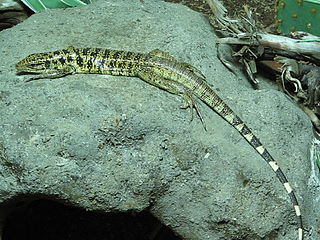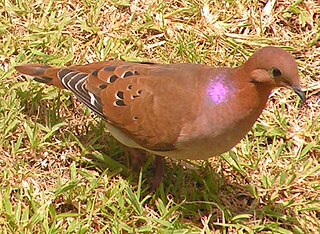
Teiidae is a family of autarchoglossan lizards native to the Americas. Members of this family are generally known as whiptails or racerunners; however, tegus also belong to this family. Teiidae is sister to the Gymnopthalmidae, and both families comprise the Teiioidea. The Teiidae includes several parthenogenic species – a mode of clonal reproduction. Presently, the Teiidae consists of approximately 150 species in eighteen genera.

Kentropyx is a genus of whiptail lizards in the family Teiidae. The genus is endemic to South America including Trinidad and Barbados.
François Marie Daudin was a French zoologist.

Paulo Emilio Vanzolini was a Brazilian scientist and music composer. He was best known for his samba compositions, including the famous "Ronda", "Volta por Cima", and "Boca da Noite", and for his scientific works in herpetology. He is considered one of the greatest samba composers from São Paulo. Until his death, he still conducted research at the University of São Paulo (USP).

James Ray Dixon was professor emeritus and curator emeritus of amphibians and reptiles at the Texas Cooperative Wildlife Collection at Texas A&M University. He lived in El Campo, Texas, throughout most of his childhood. He published prolifically on the subject of herpetology in his distinguished career, authoring and co-authoring several books, book chapters, and numerous peer reviewed notes and articles, describing two new genera, and many new species, earning him a reputation as one of the most prominent herpetologists of his generation. His main research focus was morphology based systematics of amphibians and reptiles worldwide with emphasis on Texas, US, Mexico, Central America, and South America, although bibliographies, conservation, ecology, life history and zoogeography have all been the subjects of his extensive publications.

The fauna of Barbados comprises all the animal species inhabiting the island of Barbados and its surrounding waters. Barbados has less biodiversity than the other Antilles. Human activities are responsible for the change in the composition of the fauna, in particular, the replacement of native species. Species that are able to adapt to human presence have survived.
Plasmodium pifanoi is a parasite of the genus Plasmodium subgenus Paraplasmodium. As in all Plasmodium species, P. pifanoi has both vertebrate and insect hosts. The vertebrate hosts for this parasite are lizards.
Plasmodium lepidoptiformis is a parasite of the genus Plasmodium.
Plasmodium kentropyxi is a parasite of the genus Plasmodium subgenus Sauramoeba.

Kentropyx calcarata, commonly known as the striped forest whiptail, is a species of lizard endemic to South America.
Kentropyx altamazonica, also known commonly as the Cocha whiptail, is a species of lizard in the family Teiidae. The species is native to South America.
Kentropyx lagartija, also known commonly as the Tucuman whiptail, is a species of lizard in the family Teiidae. The species is endemic to Argentina.
Kentropyx paulensis, also known commonly as Boettger's kentropyx and calango or calanguinho in Brazilian Portuguese, is a species of lizard in the family Teiidae. The species is endemic to Brazil.
Kentropyx striata, known commonly as the striped whiptail, is a species of lizard in the family Teiidae. The species is endemic to northern South America.
Kentropyx vanzoi, also known commonly as Gallagher's kentropyx and o calanguinho-listrado in Brazilian Portuguese, is a species of lizard in the family Teiidae. The species is native to central South America.
Kentropyx viridistriga, the green kentropyx, is a species of teiid lizard found in Argentina, Brazil, and Bolivia.




